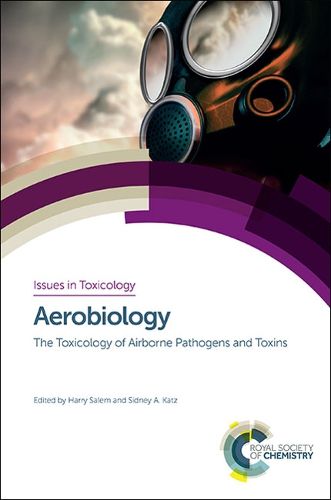Readings Newsletter
Become a Readings Member to make your shopping experience even easier.
Sign in or sign up for free!
You’re not far away from qualifying for FREE standard shipping within Australia
You’ve qualified for FREE standard shipping within Australia
The cart is loading…






Aerobiology is the study of airborne organic particulates in the environment, such as bacteria or fungal spores. These can be either naturally occurring or artificially introduced into the air. Some of the toxicological, pharmacological, and physiological effects of bioaerosols include infections, allergies, and cancer. Research efforts in aerobiology range from remediating household mould to combating bioterrorism. This book focusses on the toxicological aspects of aerobiology, considering the adverse health effects associated with the inhalation of specific bioaerosols, such as anthrax and ricin. Additionally, chapters cover techniques for generating, sampling and characterizing airborne biological materials as well as methods for establishing standards of exposure. Moreover, mitigation of exposure and protection against exposure are described.
Bringing together the contemporary status of information in the area, this book will be a valuable reference book for pulmonary specialists, general practitioners of medicine, public health and public safety officers, first responders, military personnel, and students studying toxicology and related disciplines.
$9.00 standard shipping within Australia
FREE standard shipping within Australia for orders over $100.00
Express & International shipping calculated at checkout
Aerobiology is the study of airborne organic particulates in the environment, such as bacteria or fungal spores. These can be either naturally occurring or artificially introduced into the air. Some of the toxicological, pharmacological, and physiological effects of bioaerosols include infections, allergies, and cancer. Research efforts in aerobiology range from remediating household mould to combating bioterrorism. This book focusses on the toxicological aspects of aerobiology, considering the adverse health effects associated with the inhalation of specific bioaerosols, such as anthrax and ricin. Additionally, chapters cover techniques for generating, sampling and characterizing airborne biological materials as well as methods for establishing standards of exposure. Moreover, mitigation of exposure and protection against exposure are described.
Bringing together the contemporary status of information in the area, this book will be a valuable reference book for pulmonary specialists, general practitioners of medicine, public health and public safety officers, first responders, military personnel, and students studying toxicology and related disciplines.